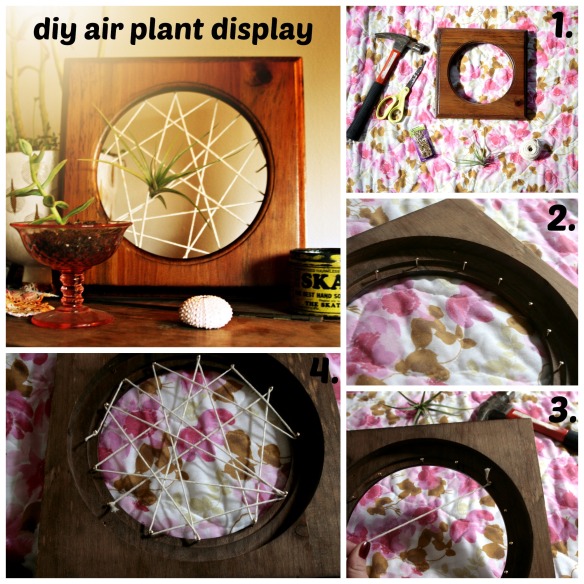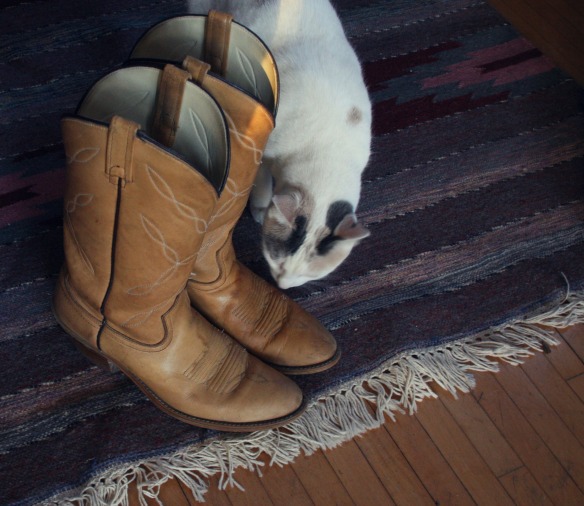While this post is from the summer of 2010, Sew Simple remains my go-to spot for all my alterations. Since they just opened the doors to their new location (yay!), I thought it’d be a good time to refresh this post with updated info and additional tips.

Confession: I can’t sew for shit. My most recent accomplishment involving a needle and thread was sewing buttons onto a shirt of my sweetheart’s—a task that took me approximately an hour and an extra-large whiskey ginger.
It’s understandable then, when I need something hemmed, patched or repaired, I take it to the pros. Like Pahoua Hoffman and her mom, Chia, at Sew Simple, a-cute-as-a-button operation (conveniently located in the same building as my favorite Chinese takeout joint) that specializes in speedy, affordable alterations and tailoring. Since taking your thrifted vintage in to a tailor can be a bit intimidating at first, I thought, with the help of Sew Simple’s pros, we could cover some basics so your next visit is a snap.
1. Learn some basic lingo.
Knowing what to ask for is half the battle, and getting some simple terms down will definitely help you to not sound like a fool.
Hem: A hem is made when the bottom edge of a garment is folded over once, folded over again and then sewed down. A simple hem is when the garment is unlined. If you want a maxi dress made into a mini, or pants made into shorts, hemming is what you want. This also applies to shortening shirt hems, sleeves, jackets…anything with an edge.
Original hem: At Sew Simple, you can choose to have a simple hem (described above), or you can opt to keep the original hem (also known as a Euro hem) where the extra length is tucked under and sewn in such a way that the original hem is kept intact. This option is good for when you want to keep a detailed hem or maintain the same thread color used on other parts of the garment.
Taking in: The process of taking in an item makes it smaller for a more fitted silhouette. If you love a skirt, for example, but the waist is slightly too big, this is what you ask for.
Let out: The process of opening the seam allowance (definition below) to let out the extra fabric to create a looser fit. This is what you want to ask for if you thrifted a blazer or dress and the fit is a little too snug.
Seam allowance: A seam allowance is the area between the edge of fabric and the stitching line on two (or more) pieces of material being stitched together. Seam allowances can range from 1/4-inch wide to as much as several inches. If you’re hoping to have something let out, check the seam allowance. If it’s small (like 1/2-inch or less), your tailor won’t be able to do much.
Lining: Lining is an inner layer of fabric, fur or other fabric that provides a nice, neat finish.
Seam: A seam is a line of fabric held together by thread.
2. Have realistic expectations.
Don’t get your hopes up; not everything is reparable. “We’ll tell you when we can’t fix something,” says Hoffman. Bringing your item in to a tailor is a good first step (don’t call and try to explain what you want fixed over the phone!). Consultations are often free, as is the case at Sew Simple.
Don’t expect that your garment will look “perfect” or brand-new, especially if you’re getting holes repaired, Hoffman cautions. “Most people who understand what vintage is are just happy that their garment is wearable again,” she says.
Don’t plan on being in and out in a flash. You will need to allot time to explain to your tailor what you want done, and if you want the fit altered, you’ll need time to try the garment on and have your tailor work with you to hatch a plan.
Some fixes need more of a designer’s touch, for example, if you want to reconstruct a piece or alter is drastically. An experienced tailor will know when something is beyond their skill level, and can refer you to a designer who can help. Sew Simple has relationships with local designers who can help you with a more creative project and can refer you to them.
3. Don’t go empty-handed.
Do bring (or wear) the underthings you’ll be wearing with the piece of clothing you want altered or fixed. It’s amazing the difference that foundation garments (a strapless bra or pair of Spanx, for example) can make in terms of fit. Also be sure to bring the shoes you’ll be wearing with the item—heels, flats, etc.—this goes for guys, too!
Do bring your wallet. Most tailors require full or partial payment in advance. Pricing varies per tailor, per repair. Most tailors will give you a quote for every piece. Sew Simple has a handy list of prices for common alterations, which you can check out here. (Handy much?)
Do be prepared to wait for your goodies. Your tailor should be able to give you a ballpark range of when your garment will be ready—usually in a few days to a week, with more complex alterations taking longer. If you need it in a jiffy, let them know, and they might be able to rush it through. At Sew Simple, there’s no fee to put a rush on an item, but be ready to shell out a bit more for faster service at other tailors.
 A big thank you goes to Pahoua and her mom, who were ultra-helpful with putting this post together. Keep your eyes out for more tailoring-related posts featuring wisdom from the friendly folks at Sew Simple!
A big thank you goes to Pahoua and her mom, who were ultra-helpful with putting this post together. Keep your eyes out for more tailoring-related posts featuring wisdom from the friendly folks at Sew Simple!
Sew Simple
Hours: Monday-Saturday, 11 a.m.-7 p.m.; Closed on Sunday
Location: 2424 Nicollet Ave., Minneapolis, MN 55404
Contact: Phone, 612.872.4430
They’re also on Facebook and Twitter!
xo,
Meghan
 Step one: Dab some acetone on your cotton or rag.
Step one: Dab some acetone on your cotton or rag. Annnnd, you’re done! So easy right? This little trick works for taking grease-pencil prices off the soles of thrifted shoes, glassware, you name it. USE CAUTION, however, when using acetone on painted surfaces, as it can also remove the paint, along with the wax. Test in an inconspicuous location or try another method. Under NO circumstances should you ever use acetone on finished wood.
Annnnd, you’re done! So easy right? This little trick works for taking grease-pencil prices off the soles of thrifted shoes, glassware, you name it. USE CAUTION, however, when using acetone on painted surfaces, as it can also remove the paint, along with the wax. Test in an inconspicuous location or try another method. Under NO circumstances should you ever use acetone on finished wood.



































